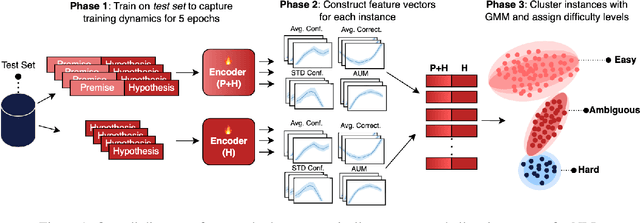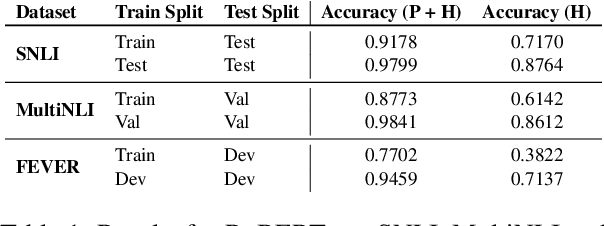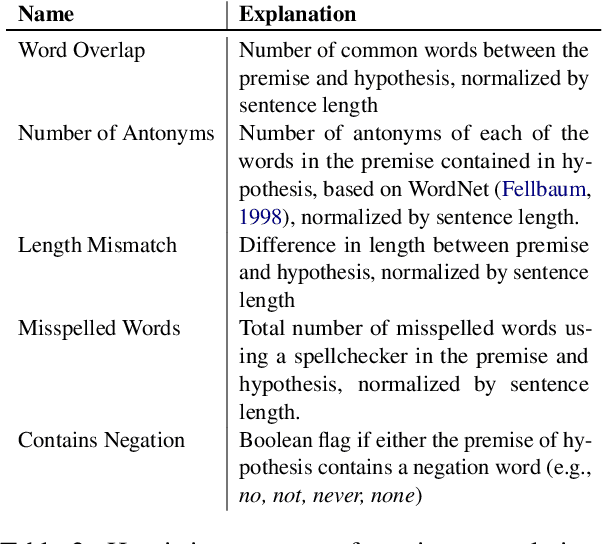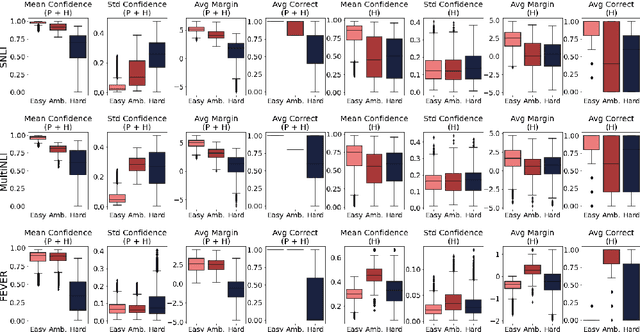Adrian Cosma
Michael Pokorny
MoME: Estimating Psychological Traits from Gait with Multi-Stage Mixture of Movement Experts
Oct 06, 2025Abstract:Gait encodes rich biometric and behavioural information, yet leveraging the manner of walking to infer psychological traits remains a challenging and underexplored problem. We introduce a hierarchical Multi-Stage Mixture of Movement Experts (MoME) architecture for multi-task prediction of psychological attributes from gait sequences represented as 2D poses. MoME processes the walking cycle in four stages of movement complexity, employing lightweight expert models to extract spatio-temporal features and task-specific gating modules to adaptively weight experts across traits and stages. Evaluated on the PsyMo benchmark covering 17 psychological traits, our method outperforms state-of-the-art gait analysis models, achieving a 37.47% weighted F1 score at the run level and 44.6% at the subject level. Our experiments show that integrating auxiliary tasks such as identity recognition, gender prediction, and BMI estimation further improves psychological trait estimation. Our findings demonstrate the viability of multi-task gait-based learning for psychological trait estimation and provide a foundation for future research on movement-informed psychological inference.
The Strawberry Problem: Emergence of Character-level Understanding in Tokenized Language Models
May 21, 2025Abstract:Despite their remarkable progress across diverse domains, Large Language Models (LLMs) consistently fail at simple character-level tasks, such as counting letters in words, due to a fundamental limitation: tokenization. In this work, we frame this limitation as a problem of low mutual information and analyze it in terms of concept emergence. Using a suite of 19 synthetic tasks that isolate character-level reasoning in a controlled setting, we show that such capabilities emerge slowly, suddenly, and only late in training. We further show that percolation-based models of concept emergence explain these patterns, suggesting that learning character composition is not fundamentally different from learning commonsense knowledge. To address this bottleneck, we propose a lightweight architectural modification that significantly improves character-level reasoning while preserving the inductive advantages of subword models. Together, our results bridge low-level perceptual gaps in tokenized LMs and provide a principled framework for understanding and mitigating their structural blind spots. We make our code publicly available.
Database-Agnostic Gait Enrollment using SetTransformers
May 05, 2025



Abstract:Gait recognition has emerged as a powerful tool for unobtrusive and long-range identity analysis, with growing relevance in surveillance and monitoring applications. Although recent advances in deep learning and large-scale datasets have enabled highly accurate recognition under closed-set conditions, real-world deployment demands open-set gait enrollment, which means determining whether a new gait sample corresponds to a known identity or represents a previously unseen individual. In this work, we introduce a transformer-based framework for open-set gait enrollment that is both dataset-agnostic and recognition-architecture-agnostic. Our method leverages a SetTransformer to make enrollment decisions based on the embedding of a probe sample and a context set drawn from the gallery, without requiring task-specific thresholds or retraining for new environments. By decoupling enrollment from the main recognition pipeline, our model is generalized across different datasets, gallery sizes, and identity distributions. We propose an evaluation protocol that uses existing datasets in different ratios of identities and walks per identity. We instantiate our method using skeleton-based gait representations and evaluate it on two benchmark datasets (CASIA-B and PsyMo), using embeddings from three state-of-the-art recognition models (GaitGraph, GaitFormer, and GaitPT). We show that our method is flexible, is able to accurately perform enrollment in different scenarios, and scales better with data compared to traditional approaches. We will make the code and dataset scenarios publicly available.
On Model and Data Scaling for Skeleton-based Self-Supervised Gait Recognition
Apr 10, 2025Abstract:Gait recognition from video streams is a challenging problem in computer vision biometrics due to the subtle differences between gaits and numerous confounding factors. Recent advancements in self-supervised pretraining have led to the development of robust gait recognition models that are invariant to walking covariates. While neural scaling laws have transformed model development in other domains by linking performance to data, model size, and compute, their applicability to gait remains unexplored. In this work, we conduct the first empirical study scaling on skeleton-based self-supervised gait recognition to quantify the effect of data quantity, model size and compute on downstream gait recognition performance. We pretrain multiple variants of GaitPT - a transformer-based architecture - on a dataset of 2.7 million walking sequences collected in the wild. We evaluate zero-shot performance across four benchmark datasets to derive scaling laws for data, model size, and compute. Our findings demonstrate predictable power-law improvements in performance with increased scale and confirm that data and compute scaling significantly influence downstream accuracy. We further isolate architectural contributions by comparing GaitPT with GaitFormer under controlled compute budgets. These results provide practical insights into resource allocation and performance estimation for real-world gait recognition systems.
A Retrieval-Based Approach to Medical Procedure Matching in Romanian
Mar 26, 2025Abstract:Accurately mapping medical procedure names from healthcare providers to standardized terminology used by insurance companies is a crucial yet complex task. Inconsistencies in naming conventions lead to missclasified procedures, causing administrative inefficiencies and insurance claim problems in private healthcare settings. Many companies still use human resources for manual mapping, while there is a clear opportunity for automation. This paper proposes a retrieval-based architecture leveraging sentence embeddings for medical name matching in the Romanian healthcare system. This challenge is significantly more difficult in underrepresented languages such as Romanian, where existing pretrained language models lack domain-specific adaptation to medical text. We evaluate multiple embedding models, including Romanian, multilingual, and medical-domain-specific representations, to identify the most effective solution for this task. Our findings contribute to the broader field of medical NLP for low-resource languages such as Romanian.
Humanity's Last Exam
Jan 24, 2025Abstract:Benchmarks are important tools for tracking the rapid advancements in large language model (LLM) capabilities. However, benchmarks are not keeping pace in difficulty: LLMs now achieve over 90\% accuracy on popular benchmarks like MMLU, limiting informed measurement of state-of-the-art LLM capabilities. In response, we introduce Humanity's Last Exam (HLE), a multi-modal benchmark at the frontier of human knowledge, designed to be the final closed-ended academic benchmark of its kind with broad subject coverage. HLE consists of 3,000 questions across dozens of subjects, including mathematics, humanities, and the natural sciences. HLE is developed globally by subject-matter experts and consists of multiple-choice and short-answer questions suitable for automated grading. Each question has a known solution that is unambiguous and easily verifiable, but cannot be quickly answered via internet retrieval. State-of-the-art LLMs demonstrate low accuracy and calibration on HLE, highlighting a significant gap between current LLM capabilities and the expert human frontier on closed-ended academic questions. To inform research and policymaking upon a clear understanding of model capabilities, we publicly release HLE at https://lastexam.ai.
How Hard is this Test Set? NLI Characterization by Exploiting Training Dynamics
Oct 04, 2024



Abstract:Natural Language Inference (NLI) evaluation is crucial for assessing language understanding models; however, popular datasets suffer from systematic spurious correlations that artificially inflate actual model performance. To address this, we propose a method for the automated creation of a challenging test set without relying on the manual construction of artificial and unrealistic examples. We categorize the test set of popular NLI datasets into three difficulty levels by leveraging methods that exploit training dynamics. This categorization significantly reduces spurious correlation measures, with examples labeled as having the highest difficulty showing markedly decreased performance and encompassing more realistic and diverse linguistic phenomena. When our characterization method is applied to the training set, models trained with only a fraction of the data achieve comparable performance to those trained on the full dataset, surpassing other dataset characterization techniques. Our research addresses limitations in NLI dataset construction, providing a more authentic evaluation of model performance with implications for diverse NLU applications.
RoMath: A Mathematical Reasoning Benchmark in Romanian
Sep 17, 2024



Abstract:Mathematics has long been conveyed through natural language, primarily for human understanding. With the rise of mechanized mathematics and proof assistants, there is a growing need to understand informal mathematical text, yet most existing benchmarks focus solely on English, overlooking other languages. This paper introduces RoMath, a Romanian mathematical reasoning benchmark suite comprising three datasets: RoMath-Baccalaureate, RoMath-Competitions and RoMath-Synthetic, which cover a range of mathematical domains and difficulty levels, aiming to improve non-English language models and promote multilingual AI development. By focusing on Romanian, a low-resource language with unique linguistic features, RoMath addresses the limitations of Anglo-centric models and emphasizes the need for dedicated resources beyond simple automatic translation. We benchmark several open-weight language models, highlighting the importance of creating resources for underrepresented languages. We make the code and dataset available.
Gait Recognition from Highly Compressed Videos
Apr 18, 2024Abstract:Surveillance footage represents a valuable resource and opportunities for conducting gait analysis. However, the typical low quality and high noise levels in such footage can severely impact the accuracy of pose estimation algorithms, which are foundational for reliable gait analysis. Existing literature suggests a direct correlation between the efficacy of pose estimation and the subsequent gait analysis results. A common mitigation strategy involves fine-tuning pose estimation models on noisy data to improve robustness. However, this approach may degrade the downstream model's performance on the original high-quality data, leading to a trade-off that is undesirable in practice. We propose a processing pipeline that incorporates a task-targeted artifact correction model specifically designed to pre-process and enhance surveillance footage before pose estimation. Our artifact correction model is optimized to work alongside a state-of-the-art pose estimation network, HRNet, without requiring repeated fine-tuning of the pose estimation model. Furthermore, we propose a simple and robust method for obtaining low quality videos that are annotated with poses in an automatic manner with the purpose of training the artifact correction model. We systematically evaluate the performance of our artifact correction model against a range of noisy surveillance data and demonstrate that our approach not only achieves improved pose estimation on low-quality surveillance footage, but also preserves the integrity of the pose estimation on high resolution footage. Our experiments show a clear enhancement in gait analysis performance, supporting the viability of the proposed method as a superior alternative to direct fine-tuning strategies. Our contributions pave the way for more reliable gait analysis using surveillance data in real-world applications, regardless of data quality.
Aligning Actions and Walking to LLM-Generated Textual Descriptions
Apr 18, 2024



Abstract:Large Language Models (LLMs) have demonstrated remarkable capabilities in various domains, including data augmentation and synthetic data generation. This work explores the use of LLMs to generate rich textual descriptions for motion sequences, encompassing both actions and walking patterns. We leverage the expressive power of LLMs to align motion representations with high-level linguistic cues, addressing two distinct tasks: action recognition and retrieval of walking sequences based on appearance attributes. For action recognition, we employ LLMs to generate textual descriptions of actions in the BABEL-60 dataset, facilitating the alignment of motion sequences with linguistic representations. In the domain of gait analysis, we investigate the impact of appearance attributes on walking patterns by generating textual descriptions of motion sequences from the DenseGait dataset using LLMs. These descriptions capture subtle variations in walking styles influenced by factors such as clothing choices and footwear. Our approach demonstrates the potential of LLMs in augmenting structured motion attributes and aligning multi-modal representations. The findings contribute to the advancement of comprehensive motion understanding and open up new avenues for leveraging LLMs in multi-modal alignment and data augmentation for motion analysis. We make the code publicly available at https://github.com/Radu1999/WalkAndText
 Add to Chrome
Add to Chrome Add to Firefox
Add to Firefox Add to Edge
Add to Edge